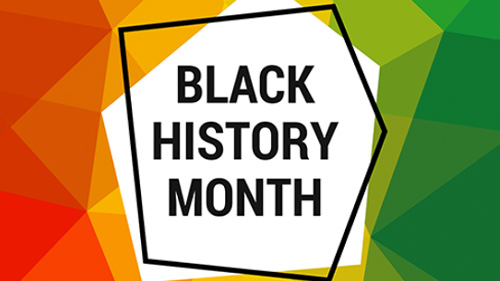Hispanic Heritage Month: Speaking and Scribbling in Spanish
When my mother was going to school in the panhandle of Texas, she and her friends were punished if they spoke Spanish in school. When my brothers and...
AP & Honors Mathematics
Explore Wiley titles to support both AP and Honors mathematics instruction.
Literacy Skills & Intensive Reading
Connections: Reading – Grades 6–12
Empower student success with a proven intensive reading program that develops strong reading skills in striving readers.
Drama, Speech & Debate
Basic Drama Projects 10th Edition
Build students’ confidence and competence with comprehensive, project-based theatre instruction.
Literature
Connections: Literature
Support learners as they study dynamic, relevant texts and bring the richness of diverse voices to students through literature.
Literature & Thought
Develop critical thinking, reading, and writing across literacy themes, genres, historical eras, and current events.
Language Arts
Vocabu-Lit® – Grades 6–12
Help students build word power using high-quality contemporary and classic literature, nonfiction, essays, and more.
Connections: Writing & Language
Help students develop grammar, usage, mechanics, vocabulary, spelling, and writing and editing skills.
Reading/English Language Arts
Measuring Up to the English Language Arts Standards
Incorporate standards-driven teaching strategies to complement your ELA curriculum.
English Language Learners
Measuring Up for English Language Learners
Incorporate research-based best practices for ELLs with an approach that includes a focus on language acquisition strategies.
Mathematics
Measuring Up to the Mathematics Standards
Incorporate standards-driven teaching strategies to complement your mathematics curriculum.
Foundations
Measuring Up Foundations
Help students master foundational math skills that are critical for students to find academic success.
Science
Measuring Up to the Next Generation Science Standards
Give students comprehensive NGSS coverage while targeting instruction and providing rigorous standards practice.
Assessment
Measuring Up Live
Deliver innovative assessment and practice technology designed to offer data-driven instructional support.
For a better website experience, please confirm you are in:
5 min read
-1.png) Michael M. Guevara
Nov 30, 2021 2:14:24 PM
Michael M. Guevara
Nov 30, 2021 2:14:24 PM

In recent months I learned, along with others around the world, of the horrific stories of the mass unmarked grave sites of Indigenous, or Aboriginal, residents of Canada’s Indian residential school system. Wrenching stories of Indigenous students digging graves for classmates, children disappearing suspiciously, unmarked burial grounds, and Canada’s vile goal of those residential schools: “Kill the Indian and save the man.”
We often think of the atrocities committed against Native Americans by the United States, of how this country sought to destroy the heritage and culture of Native American and Indigenous people, and about how we have perpetuated the myth of peace and unity with the Native Americans in the Thanksgiving story.
Canada, which has its own Thanksgiving, often falls into the role of the kinder, gentler North American country, but as we have learned, Canada has a multitude of sins against its Aboriginal people.
That ethos seems to undergird The Marrow Thieves by Cherie Dimaline, from the Georgian Bay Métis Nation, a part of Métis Nation of Ontario.
From page one this book gets you, draws you in, makes you feel like the characters—uncomfortable and on the run.
Set in a future reeling from the effects of climate change, people have lost their ability to dream, which causes them to delve into madness. But there is a way to bring back dreams—the marrow that lies in the bones of the native people of North America. To bring back the dreams of the world, they must give up their own dreams because to steal their marrow is to steal their lives. Sixteen-year-old Frenchie, of the Georgian Bay Métis Nation, and his friends are on the run, desperately trying to reunite with family and escape the recruiters who want to find them and bring them back to the marrow factories.
Early in the novel, the reader is brought into those horrific headlines of today.
“A few had escaped from the schools, and the stories they told were anything but heartwarming… ‘Miigwans says the Governor’s Committee didn’t set up the schools brand new; he says they were based on the old residential school system they used to try to break our people to begin with, way back.’” (4–5)
The Marrow Thieves is definitively dystopian, but it’s more than that. It is a reminder, especially during Native American Heritage Month and beyond, of the power of dreams and the stories of those whose histories history has worked tirelessly to diminish.
In The Marrow Thieves, Cherie Dimaline piques the reader’s attention from page one. Students can take a lesson from how Dimaline uses details early to draw the reader into the text.
“Mitch was smiling so big his back teeth shone in the soft light of the solar-powered lamp we’d scavenged from someone’s shed. ‘Check it out.’ He held a bag of Doritos between us—a big bag, too.
‘Holy, Mitch! Where’d you get that?’ I touched the air-pressurized bag to confirm it was real. My dirty fingers skittered across the shiny surface like skates. It was real. My mouth filled with spit, and a rotten hole in one of my molars yelled its displeasure.” (1)
Using the excerpt from the text, have students complete the chart below. In one column have students list specific details, phrases, and words the author uses to evoke meaning and pique the reader’s interest. This is “The Said.” In the second column students will list what is conveyed through the specific details, phrases, and words the writer uses. What does it mean that the characters are so excited about Doritos? Why does he need to “confirm it was real”? Why is the detail “a rotten hole in one of my molars” included? This is “The Unsaid.”
|
The Said |
The Unsaid |
|
|
|
Snack Attack: Have students choose their snack of choice and use it and the excerpt as a mentor text to write their own Said and Unsaid introduction/passage.
Students often think of punctuation as perfunctory, as nothing more than rules to try to follow and maybe understand, but—hold on to your knickers—punctuation can be so much more.
Read the following excerpt from the text.
“He paused and drank half the liquid in his greasy glass, a kind of moonshine he kept in an old pop bottle on the back stoop. He placed it hard on the picnic table we’d hauled into the main room of the cabin. The glass echoed the wood in its hollow curve. It was punctuation. It made me jump.” (5)
In the passage, the bottle placed hard on the table is used as punctuation and its purpose is to make the narrator jump.
Show students the YouTube clip from The West Wing where the president asks his staff during a poker game to list the fourteen punctuation marks in standard English grammar. Teachers can begin the clip and pause it after the question to give students the chance to individually or in groups list as many of the punctuation marks as possible. Finish the clip for students to check their answers. See the clip here.
Purposeful punctuation is important for writers. Teachers can take a moment to review or conduct a minilesson on some less commonly used punctuation marks. Teachers may introduce the em dash, the colon, or ellipses.
Have students go back into a previous piece of writing and examine how they could revise their writing to include new or varied punctuation to communicate a specific purpose.
Quick Write: Set a timer and give students three to five minutes to write. Have students write about a time they injured themselves, someone else was injured, or even a time they were ill.
Students may have learned that a paragraph must be four to five sentences with a main or topic sentence included; however, writers often vary the length of their paragraphs to create rhythm and flow.
Read the following excerpt from the novel.
“Mitch was carrying on like a madman in the tree house. Yelling while they dragged him down the ladder and onto the grass. I heard a bone snap like a young branch. He yelled when they each grabbed an arm and began pulling. He yelled around the house, into the front yard, and into the van, covering all sounds of a small escape in the trees.
Then the door slid shut.
And an engine clicked on and whirred to life.
And I was alone.” (4)
Draw student’s attention to the writer’s use of one-sentence paragraphs. You may point out to students that by using one-sentence paragraphs that the writer creates a sense of drama and movement that helps emphasize how alone the narrator ultimately feels.
Have students return to their quick write. Using the excerpt as a mentor text, ask students to revise their writing to see where they can include one-sentence paragraphs. Give students the opportunity to read with a partner and then share with the class.
Interested in buying any of the books mentioned in this post? Visit our classroom libraries page.
Download the pdf to easily print or save!
Michael Méndez Guevara is a former high school journalism and English teacher who spent his time in the classroom helping students see themselves as writers and fall in love with reading through the world of young adult literature. As an educational sales consultant with Perfection Learning®, Michael works with teachers and schools on improving their literacy instruction and providing resources to help students achieve academic success. He has taught elementary school, middle school, and high school and has worked as a district level leader and served on the Texas state standards revision committee that developed the state’s current literacy standards. He is the father of three adult sons, the youngest a student at the University of Kansas—Rock Chalk! Michael is working on a professional development book for literacy educators and currently has agents reading the manuscript of his young adult novel, The Closest Thing to a Normal Life. When he's not reading, writing, or running, Michael is fully committed to watching as much Law & Order as possible.

When my mother was going to school in the panhandle of Texas, she and her friends were punished if they spoke Spanish in school. When my brothers and...

The words are never right. The time is never perfect. And life keeps piling stress after stress onto the people we love. What do we say to someone...

Tokyo Ever After: A Novel by Emiko Jean has been climbing the charts as one of the most popular books right now for young adults. With Netflix’s “The...

On December 20, four days after his semester finished, my youngest son flew home for Christmas break. On December 29, he flew back—19 days before his...

Every time I open up Instagram, Facebook, or Twitter, I’m given the option to post to stories or urged to open the stories of others. Pictures that...

Okay—circle of trust here. After dropping my youngest child off at college all the way from San Antonio, Texas, to Lawrence, Kansas, at The...

The way authors structure their books is sometimes jaw-dropping. So impressive that by the end you hug it tight, knowing it taught you something, or...

In recent months, the Taliban in the Middle East has taken over once again after American troops removed themselves. The first person I thought of...

Many lessons ran through my mind while reading There There by Tommy Orange. We could talk about the parallel plot text structure; we could talk about...

Growing up with three brothers and not Catholic, quinceañeras weren’t really a thing we did. But when Yvette Guerrero turned 15 and Betty Espinosa...

Like most kids ushered though elementary school in the days when the Charlie Brown holiday specials aired on television once a year and if you missed...

May is Mental Health Awareness Month. It’s also the last full month of school for traditionally-scheduled districts. I think mental health is the...
